
Stories about Navajo Four Seasons, Native American Cradleboards, Pia Toya Story, Parent Committee Special Projects, and Powwow Dancing.
- Subject:
- Arts and Humanities
- Dance
- Literature
- Date Added:
- 03/16/2021

Stories about Navajo Four Seasons, Native American Cradleboards, Pia Toya Story, Parent Committee Special Projects, and Powwow Dancing.
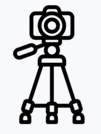
This lesson plan is to support teachers in learning how to incorporate storyboarding and scripting into the classroom! This is a great way to have students use sequencing, main idea and details, and narrative creation to allow students to develop their own stories using a storyboard and script. The students will also have the opportunity to see their masterpiece come alive, with support from their teacher, putting together their creations piece by piece. This will be a great introduction into filmmaking in the classroom!

Lesson about A.A. Milne for Elementary Librarians or Classroom Teachers

This is a lesson is meant to guide educators through the autobiogrpahy Adobe Express project. Students will create an autobiography video of their life. They will document their life with picutres and present using Adobe Express video.

Students form literature circles, read "Esperanza Rising" or "Becoming Naomi Leon" by Pam MuĐoz Ryan, use a Critical Thinking Map to discuss social issues, and use a class wiki.
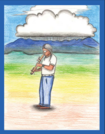
In traditional Ute culture, the flute was used for healing ceremonies, or sometimes for courting. A man would play a song to win the heart of a woman. According to tradition, only she could hear the music being played for her.This lesson utilizes a true story of Aldean Ketchum, flute player and storyteller. Aldean is a member of the White Mesa Ute tribe. The White Mesa Utes, located in White Mesa, Utah, are members of the Ute Mountain Ute tribe. The Ute Mountain Ute tribal headquarters are located about 90 miles east, in Towoac, Colorado.Student will learn more about Native American flutes and create a bio poem.
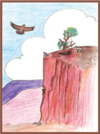
Aldean Ketchum is a White Mesa Ute tribal member. He grew up in southern Utah. He is a storyteller and flute player. He share a story about a hawk. The Ute people have a close association with nature and a respect for all living things. They share the earth with animals, and they look to them for guidance. The Utes honor the hawk in ceremonies, and they use hawk feathers in their regalia. Students will learn more about the White Mesa Ute tribe, birds of prey (raptors) and engage in strategies before, during and after reading the story.

Studied students stupefy! Students learn about alliteration by listening to an alliterative read-aloud and apply the knowledge they gain to the creation of their own poem and illustration.
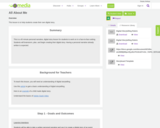
This lesson is to help students create their own digital story.
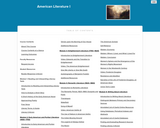
This course is a survey of American Literature from 1650 through 1820. It covers Early American and Puritan Literature, Enlightenment Literature, and Romantic Literature. It teaches in the context of American History and introduces the student to literary criticism and research.
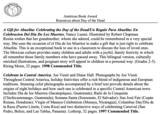
The Américas Award, which began in 1993, was founded by the Consortium of Latin American Studies Programs (CLASP) to encourage and commend authors and illustrators who produce children’s and young adult literature with themes concerning Latin America. More information can be found on the CLASP website (http://claspprograms.org/pages/detail/37). Each year the award names two winners, honorable mentions and commended titles. The books listed in this document are those books which address issues of relevance to teaching about Day of the Dead. Lists of other Américas Award winning books can be found on the CLASP website.

Students read three short stories about women; discuss the development of female characters, gender differences, and society' s expectations; and write scripts in which the characters discuss their similarities and differences.

Students apply the analytical skills that they use when reading literature to an exploration of the underlying meaning and symbolism in Hieronymous Bosch's early Renaissance painting "Death and the Miser".
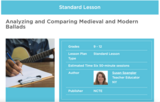
Students explore the ballads genre by reading medieval ballads to deduce their characteristics, acting out the ballads, comparing medieval and modern ballads using Venn diagrams, and composing their own ballads.
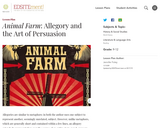
Allegories are similar to metaphors: in both the author uses one subject to represent another, seemingly unrelated, subject. However, unlike metaphors, which are generally short and contained within a few lines, an allegory extends its representation over the course of an entire story, novel, or poem. This lesson plan will introduce students to the concept of allegory by using George Orwell’s widely read novella, Animal Farm, which is available on Project Gutenberg.

In this lesson, students will learn a simple, kid friendly way to do research. Their notes will later be used as they write an informational animal report.
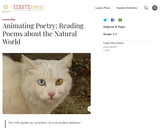
The purpose of this project is two-fold: first, to encourage students to make the reading of poetry a creative act; and, second, to help students appreciate particular literary devices in their functions as semaphores or interpretive signals. Those devices that are about the imagery of a poem (metaphor, simile, personification, description) can be thought of as magnifying glasses: we see most clearly that upon which the poet focuses our gaze. Similarly, those poetic devices that are about the sound of the poem (alliteration, consonance, enjambment, onomatopoeia, and repetition) can be thought of as volume buttons or amplifiers: we hear most clearly what the poet makes us listen to most attentively.
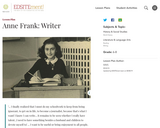
This lesson concentrates on Anne Frank as a writer. After a look at Anne Frank the adolescent, and a consideration of how the experiences of growing up shaped her composition of the Diary, students explore some of the writing techniques Anne invented for herself and practice those techniques with material drawn from their own lives.

Video resource for approaching Hamlet for English and Theatre Educators

Video resource for approaching Hamlet for English and Theatre Educators